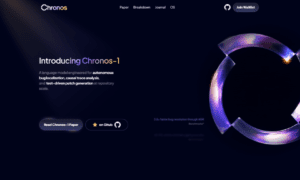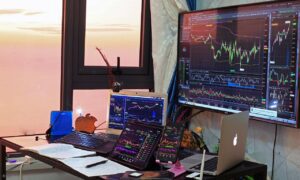Introduction:
In the dynamic realm of music production, technology stands as a catalyst for innovation, continually shaping the way artists create and shape their sonic landscapes. From the advent of digital audio workstations (DAWs) to the integration of artificial intelligence (AI) and virtual instruments, the tech trends in music production are evolving at a rapid pace. In this exploration, we will delve into the transformative impact of these trends, from AI-assisted mixing to the expansive possibilities offered by virtual instruments.
The Digital Revolution:
The journey of music production is intricately tied to the digital revolution that swept through the industry. Traditional analog recording methods have given way to the convenience and flexibility of digital technologies, opening up new avenues for creativity and experimentation. Digital audio workstations have become the cornerstone of modern music production, providing artists with powerful tools to compose, arrange, and produce music in a digital environment.
Short Sentences for Clarity:
In the context of the digital revolution, the use of short sentences ensures clarity in conveying the transformative shift from analog to digital in music production. These concise statements highlight the fundamental change in the way artists approach their craft, emphasizing the impact of digital technologies on the creative process.
The Rise of AI-assisted Mixing:
One of the notable tech trends reshaping music production is the integration of artificial intelligence in the mixing process. AI-assisted mixing tools analyze audio tracks, identify patterns, and make real-time adjustments to achieve a balanced and polished sound. This technology does not replace the human touch but rather enhances the efficiency of the mixing process, allowing artists to focus more on the creative aspects of their work.
Transitions:
Bridging Creativity and Efficiency:
The transition from traditional mixing methods to AI-assisted mixing is a bridge between creativity and efficiency. As we explore this trend, the seamless integration of technology becomes apparent, freeing up artists to concentrate on the artistic nuances while AI handles the technical intricacies of the mix. This transition underscores the collaborative potential between human creativity and technological precision.
Real-time Collaboration in the Cloud:
The advent of cloud-based collaboration tools has further transformed the landscape of music production. Artists and producers can now work together in real-time, regardless of geographical distances. This trend not only facilitates remote collaboration but also streamlines the workflow, enabling instantaneous sharing of ideas and feedback. The cloud-based approach is fostering a more connected and collaborative music production community.
Short Sentences for Accessibility:
In the context of discussing real-time collaboration in the cloud, short sentences contribute significantly to accessibility. Furthermore, they serve the purpose of emphasizing the immediacy and interconnectedness inherent in this trend. These succinct statements not only underscore but also illuminate the transformative impact of cloud-based collaboration. Consequently, this makes it easier for artists to seamlessly connect and create together in a more collaborative and efficient manner.
Virtual Instruments:
A Symphony of Possibilities:
Virtual instruments have become instrumental in expanding the sonic palette available to musicians and producers. These software-based instruments replicate the sounds of traditional instruments with remarkable accuracy and offer a wide array of electronic and experimental sounds. From virtual pianos and guitars to synthesizers and orchestral instruments, the world of virtual instruments unlocks a symphony of possibilities for creative expression.
Transitions:
Orchestrating Diversity in Sound:
The transition from traditional instruments to virtual counterparts orchestrates a diversity in sound. As we explore virtual instruments, the expansive range of sonic possibilities becomes evident, allowing artists to experiment with textures and tones that transcend the limitations of physical instruments. This transition reflects the democratization of musical expression through technology.
AI in Composition:
Co-creating with Machines:
Beyond mixing, AI is making strides in the realm of composition. AI algorithms analyze vast datasets of musical compositions, identify patterns, and generate new musical ideas. This collaborative approach between humans and machines is not about replacing artists but about co-creating, providing a wellspring of inspiration and suggesting novel directions in composition.
Short Sentences for Impact:
In discussing AI in composition, short sentences are employed to convey the impactful nature of this trend. These concise statements underscore the collaborative synergy between humans and AI in the creative process, emphasizing the potential for innovation and inspiration.
Immersive Audio Production:
The demand for immersive audio experiences has spurred advancements in audio production techniques. From binaural recording to spatial audio processing, artists are exploring ways to create three-dimensional soundscapes that transport listeners into the heart of the music. This trend goes beyond stereo, offering a more immersive and captivating listening experience.
Transitions:
Elevating the Listener’s Experience:
The transition from traditional audio production to immersive techniques is geared towards elevating the listener’s experience. As we delve into the realm of immersive audio production, the focus seamlessly shifts to creating a deeper connection between the music and the audience. Moreover, this trend unmistakably highlights the transformative power of technology in shaping how we perceive and engage with sound.
Blockchain and Decentralization:
The integration of blockchain technology in the music industry is disrupting traditional models of distribution and ownership. Blockchain provides a transparent and decentralized system for managing and monetizing music, ensuring fair compensation for artists and creators. This trend empowers artists by giving them more control over their work and fostering a direct relationship with their audience.
Short Sentences for Clarity:
In examining blockchain and decentralization, short sentences play a crucial role in enhancing clarity. Moreover, these succinct statements serve to underscore the transparent and empowering nature of this trend. Furthermore, they highlight the transformative impact of blockchain technology on reshaping the business dynamics of the music industry.
Conclusion:
Tech trends in music production are reshaping the creative landscape, offering artists unprecedented tools and possibilities. From AI-assisted mixing to virtual instruments, the digital revolution continues to push the boundaries of what is musically achievable. As we conclude our exploration, it’s evident that the synergy between human creativity and technological innovation is forging a new era in music production—one that is marked by efficiency, collaboration, and a boundless spectrum of sonic exploration. The future promises even more exciting developments as technology continues to evolve, providing artists with the means to create music that transcends traditional boundaries.



































